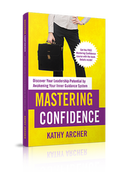|
As women leaders in nonprofit organizations, you often find yourself needing to navigate a challenging conversation. Whether addressing policy violations or managing performance issues, these discussions tend to evoke much 😩 angst and worry over how they will go.
It's your job to have difficult conversations But having difficult conversations is part of being a leader. The problem is that often when we think about these upcoming exchanges, we're trying to figure out how to have that conversation without thinking about the how. 👈🏻Yes, reread that sentence. As we rehearse an upcoming conversation in our heads, we are trying to figure out WHAT to say rather than HOW to say it. But you are missing a key component of preparations for these conversations We meticulously plan our arguments, gather evidence, and outline our case. To prepare, you:
We think less about HOW we will engage, connect, influence, impact, listen, hear, and understand. Understanding. That's a good place to start. When we engage in a difficult conversation, we seek to be understood rather than to understand. So we gather the information but try to shut off who we are. We want to be DETACHED in tough conversations I often hear women say I'm just going to go in, be clear, non-emotional, or detached. But what they're really doing is going into a conversation with lots of emotions. 😤 😡 😣They are annoyed, irritated, frustrated, and trying to pretend that they're not. Yet, when I ask my clients what happens when they are annoyed, irritated, or frustrated, they tell me things like:
🙈 And although they know they can't hide all these things, they hope the other person doesn't notice. But they are only kidding themselves. Deep down, you know that others probably pick up on it even when you pretend you aren't annoyed, irritated or frustrated. You need to manage your emotions so you can engage in the conversation The truth is emotions will arise during difficult conversations. As much as we might try to conceal them, our nonverbal cues and internal experiences can be telling. Rather than suppressing or denying these emotions, you need to acknowledge and address your emotions to deal with a challenging conversation confidently. 🤔 Before the conversation:
My client experienced an ah ha A client told me she wanted to stop being so passionate in conversations. I asked her how passion shows up during a conversation. When she's passionate, my client said she talks a lot, talks fast and gives lots of details. 🟦 I want to stop being passionate I suggested that instead of shutting the passion off that, she manage the passion and focus on being clear and concise in her message and then pausing, allowing the other person time to soak it and respond. Passion isn't the issue. That is, in fact, what we are looking for👇🏻 🟦 Oh wait...I do want to be passionate If I asked you how you want to feel about your job, you might tell me you want to feel engaged, excited, and eager to be there. Wouldn't you say that's passion? So when the behaviour of someone on your team is negatively impacting a client, why wouldn't you be passionate? ✅ It's how you use that passion that's important. 🟦 Ah, I have to learn to manage my passion When my client realized this, she was very intrigued. She does care deeply about the work she and her team are doing. It's no wonder she's passionate. 🌱 Learning to manage it rather than shutting it off is her place for growth! You need to choose the emotions you want to bring into the conversation When you prepare ahead of time, you'll approach the discussion with greater clarity, empathy, and control, paving the way for a more productive dialogue. Remember, the way we approach the conversation has a profound impact on its outcome. Difficult conversations are more effective when we focus less on content and more on the connection. The best way to do that is to let go of being right and understood and instead become curious and seek to understand. Often, our natural inclination during difficult conversations is to seek to be understood. We aim to get our point across, make our case, and ensure our perspective is acknowledged. However, a shift in mindset is necessary for building strong, trusting relationships with your employees. Instead of solely focusing on being understood, cultivate a genuine curiosity to understand the other person's viewpoint. Doing so creates an environment that encourages openness, empathy, and collaboration. Seven Mantras to Help You Through Tough Conversations 1️⃣ Curiosity is critical
2️⃣ Emotions are everything
3️⃣ Pause before you proceed
4️⃣ Connect before you continue.
5️⃣ Put the relationship before the responsibility
6️⃣ It's not just about the content; it's about the connection
7️⃣ The inner work is the work!
Your focus needs to be on WHO you will be while you are talking about the WHAT When you prepare for difficult conversations, remember that the strength of your connection is the key part. By focusing on the type of person you are in those conversations, you can create a safe space that promotes understanding, collaboration, and growth. Remember, it's not just about the content; it's about the connection. 📗 If you need help, read this: You may want some help to learn to dig deep and focus on how to have a conversation rather than what you will discuss if the conversation takes some work. Fellow coach Michael Bangay, Stanier recently published his latest book, How to Work with Almost Anyone. In it, you will learn five questions for building possible relationships with some of those people you aren't sure you will ever get along with. I highly recommend that you grab it and do the work to focus on how to have conversations, not just the content of the conversations. When you do, it will be incredible peace to help you manage your emotions and increase your emotional intelligence while having those conversations with difficult people. p.s. The inner work IS the work! Where will you start today to grow yourself from the inside out?
0 Comments
Building Emotional Intelligence As a nonprofit woman leader, do you ever wish that you could pause a situation, rewind and pull back what you just said or did? There are certainly days that I wish that I could reverse time and have a do-over of a conversation or situation. Sometimes words seem to fall out of our mouths, and we wish we could grab them back. Understanding Emotional Intelligence As a new leader, after moving up from a front-line position to a leadership position, I was suddenly supervising my peers. Feeling unsure of myself and lacking the confidence to address issues calmly, I remember yelling at my administrative support 🤦🏼♀️ As soon as I did, I regretted it😞 I couldn't take back what I'd said. However, I learned to build my confidence and manage my emotions over time. Increasing my emotional intelligence helped me and can help you! While we can't change the past, we can slow down what is happening inside of us and positively impact what we say and how we behave, thus reducing the number of times we say or do something we regret. Doing so is all about working on building your Emotional Intelligence. It starts with learning to be aware of your emotions Someone high in Emotional intelligence, or EQ, is aware of their emotions and good at managing them. What we feel plays a key role in what we say and do. To be more tuned into what you are feeling requires you to slow down time and widen the gap between what happened and your reaction. Using the Inner Guidance Cycle helps you to do that. 🔄 Use The Inner Guidance Cycle When you PAUSE, you'll create time to PONDER and reflectively look back at past situations to see the space between an incident and your reaction to the incident. That microsecond between the two is the segment of time we want to examine first after the fact, but in time, you'll learn at the moment to be more in control of what happens in that space. When examining this gap, you want to get curious about what happened after an incident and what story you made up about that incident that caused the reaction. This is the PONDERING place where we explore thoughts, feelings and body sensations. Understanding and often changing our story is critical It is the story you told yourself, the thought that resulted in the feeling that caused you to say or do something you may regret. I use the word "story" for a reason. While we like to think of it as the truth, it's only our version of the truth. It is the story we make up based on our beliefs, values, past experiences and more. It's our perspective. When we start to change that story or shift our perspective, we move into the PIVOT stage of The Inner Guidance Cycle. These are the four steps in the Inner Guidance Cycle
Exploring the Gap Here's what is happing, often without you realizing it 👇🏻 🟦 The Incident Something happens.
🟦 Your Thoughts What we mistakenly think happens after the incident is that we react. However, this is where the gap is, after the incident but before the reaction. In that time, much transpires inside your mind and through your body. 🤔 When that thing occurred, you had a thought. Usually, it's not a conscious thought. In most cases, you aren't even remotely aware that anything happened, but it did. During this gap, you have thoughts such as:
🟦 Your body sensations The thought about the incident then creates the feeling. You experience fear, anxiety, or frustration. That feeling is felt in your body as a body sensation.
🟦 Your subsequent feelings When something happens, and we have a thought about it, as our body responds, we also have a variety of feelings. Rather than simply being mad, sad, or glad, our emotions are much more granular. We may feel:
👉🏻 Expand your Emotional Vocabulary Understanding Reactions and Responses 🟪 Your reaction It is the thought and the feeling about the incident that dictates the way you respond or react. This includes what you say and what you do. At that moment, we either react unconsciously OR if we've become more emotionally intelligent, we may choose a conscious response. Those times when the words fall out of our mouths, and we wish we could grab them back, are usually reactions. When we get angry over someone's insensitive comment, we struggle to process the thoughts and feelings attached to that hot spot they just hit. Triggered, we lash back, shut down or avoid dealing with something that should have been addressed. In essence, we fight, flight or flee. 🟪 Or your response When we use The Inner Guidance Cycle to widen that gap of time between what happened and our subsequent actions, we can first get clear on the story we are making up in our heads and our feelings attached to that story. When we do that, we have a choice to believe or alter that story. An example: Here's a personal example from one of my clients. After telling me what happened when her husband came home, we broke it down like this:
After coaching, you came up with a more Emotionally Intelligent way to respond in the future.
She knows this choice to respond this way will diffuse the situation rather than have it spiral in ways neither of them wants. Here's how you can apply it The same could be true at work. Perhaps you feel that your boss is attacking you, and your feeling backed into a corner. The reaction might be to get angry and come out fighting. Instead, by widening that gap, your subsequent thoughts and feelings can be different. 🟢 A person with high Emotional Intelligence might notice the following: "I'm feeling attacked and notice my body getting into fight or flight mode. Wait a minute. I know I'm a good person. Maybe what he's trying to say is more about the project and not me. It might be his fear of failure coming through. We are actually on the same side. I sure as heck don't want this project to fail at this either." The Inner Guidance Cycle gives you a framework to use After this thoughtful PAUSE and taking time to PONDER in our minds, we usually feel the shift of perspective, PIVOTING to a new response. PROCEEDING, we will be more in control of our emotions, words, and actions. The words that consciously come out of our mouths, rather than fall out, will move the project and the relationship forward. You can use The Inner Guidance Cycle to prepare for a tough talk with your employee! 👉🏻 Prepare for a tough talk Increased emotional intelligence gives you increased confidence You can choose your response when you are more aware, mindful and conscious. Use The Inner Guidance Cycle to increase your awareness and choice of action, increasing your Emotional Intelligence. You will not only be aware of your emotions, but you will get better at managing them. This increased awareness allows you to examine your thoughts and feelings and decide if they are true. Then, you can change them if you want fewer regrets and more feelings of confident leadership! Being more in control of your emotions helps you feel more confident as a leader. However, getting to this point takes intention, inner work, and self-reflection. In The Training Library, I purposefully create worksheets to help you do the inner work. Whether you are looking to deal with office politics, prepare for an upcoming 1-1 meeting with your employee or be more decisive, The Training Library will help you do the self-reflective work necessary to build your emotional intelligence, confidence and leadership capacity. What are you waiting for? Join The Training Library today!
As a nonprofit woman leader, do you sometimes find that your emotions sneak up on you suddenly, and you are afraid of losing it?
You are not alone. Many women have been hijacked by their emotions. As a result, they keep trying to shut off their emotions, leave them out of a conversation or ignore them..... 💁🏼♀️But here's the thing: it's not about having emotions. It's about being able to be in control of your emotions!
Get the Emotional Control Course Become aware of and then manage your emotions Emotionally intelligent managers kick butt over their unaware peers. These aware leaders not only know what their emotions are, but they can manage their emotions.
Emotional Intelligence enhances leadership effectiveness Leaders high in emotional intelligence rarely allow their thoughts to hijack them. Emotionally intelligent leaders don't lose their composure when someone says something that sparks their anger or annoyance. A leader in control of their internal state will be aware that they are irritated but can catch themselves before rolling their eyes 🙄 sighing, or making a sarcastic comment. How do you learn this? Individuals that have high EI are incredibly aware.
👉🏻 You need to become aware of your thoughts and feelings! Two Steps to Increase Your Emotional Intelligence Step 1 – Recognize emotions Step 2 – Manage emotions Get the Emotional Control Course Let's break it down further to see how it happens. 🟦 Antecedent - An event happens
🟦 Thought - You have a thought about that event
🟦 Feeling - You then experience an emotion
When you increase your emotional intelligence, you learn to gain control over your thoughts to regulate your emotions and subsequent behaviour. You learn to respond rather than react unconsciously. Do you know what your thought was? It's crucial to explore your thoughts in more depth and understand what's going on there. 💥Your thoughts dictate your emotions. The goal is to become aware of the thought and be able to change it if necessary. ⏸️ PAUSE so you can get clear on your thoughts You need to PAUSE and slow down time to understand your thoughts better. You must widen the gap between the stimulus and the consequential feeling. It's like putting a magnifying glass on the event and your emotion to see if you can identify the thought between the event and the emotion. 🤔 PONDER - It's time for self-reflection Gaining awareness of what is happening in that gap requires intentional thinking. You must create a routine that prompts you to reflect daily on that space between what happened and how you reacted.
Spending time journaling or completing self-reflective exercises is one of the best ways to achieve this slow-motion replay effect.
The 6 tricks to rewarding reflective journaling 1️⃣ Set aside 10 minutes every day to journal, preferably at the same time every day. 2️⃣ Eliminate distractions. Put your phone on the other side of the room. Shut your door. 3️⃣ Choose a particular event or situation you are ruminating about. 4️⃣ Write freely for the first ¾ of your time. Note the event and what happened, and your emotions. Add in the things they said or did that irritated you. Note who else was involved. 5️⃣ In the latter ¼ of your time, allow yourself to write about the thoughts that led to the emotion. Answer the question: "What did I think about this person, event, or circumstance?" 6️⃣ Use journal prompts such as these:
Do the work - Make the effort Working on this first step of bringing awareness to your emotions and feelings can be challenging. It's not something that comes naturally to us. At first, it may feel strange and awkward. However, by doing this work, you will automatically become more aware of what's happening inside you, allowing you to regain control and manage your feelings and responses to people and events. Remember, it takes time, so be patient with yourself. The effort and commitment will be worth it. p.s. What if your emotions were a gift, a blessing or even an edge in leadership? Learn how to use your emotions to your benefit in the Emotional Control course. Understanding and honouring your values is crucial to a leader with authenticity and integrity. As a non-profit leader, your values serve as the guiding principles that shape your decisions, actions and the overall direction of your organization. Here are some examples of how your values may clash with others, get in the way of your work or cause you to feel inner turmoil. Potential values clash: When hiring new staff: Your values of diversity, inclusivity and fairness may rub up against your value of efficiency when the diverse hire has less experience and will take more upfront work to become an efficient worker. You'll have to decide which way to lean, knowing one of your values will need to be deprioritized, which makes you feel icky. Fundraising events Perhaps in your organization, the typical fundraising event includes alcohol. However, you have strong values around addictions and supporting those with addictions and minimizing alcohol at social events. Now you need to communicate that to your board, which heavily relies on this event for program funding. Program Development You value well-thought-out decisions and take time to think critically about the risks, steps and impact. However, others on your team are frustrated with your need to pick apart everything and want to move the decision-making process along more quickly. These differences are creating tension. Conflict Resolution Maybe your open communication, respect, and fairness values guide your approach to conflict. Others, who are uncomfortable with conflict, see your approach as aggressive, and they become defensive or shut down. Now the tension is building rather than diminishing. Organizational Culture You may value trust, teamwork, and personal growth and want to focus on those elements to foster a positive and inclusive work environment. And, there is no time. You are short-staffed, find yourself running from meeting to meeting and struggle to find the time to connect in a meaningful way with your team embers. In each scenario, taking the time to reflect on your values can help you make decisions and take authentic, aligned, and impactful actions for yourself, your team, the organization and the communities you serve. But only if you are self-aware and take time for self-reflection. Values identification is an ongoing process Your values and what they mean to you change over time. Understanding how your values fit into your life and how you define them will also evolve. Therefore identifying your values is not an exercise completed once in your life. Instead, you must return to your values and review them regularly. Verifying your values is more than a sit down once; power through and figure it out exercise. It also needs time, energy and curiosity. The work will be reflective, thinking and pondering. It will be emotional work as you explore memories and possible scenarios. You won't fully understand your values in one chunk of time but over time. So come back to the process of verifying your values again and again. Each time you do, you will deepen your understanding of what your values really mean to you and why they are so important. The steps to identify your values 1️⃣ List your top values 2️⃣ Define what your values mean to you 3️⃣ Determine how your values show up in your leadership and life 4️⃣ Create a system for knowing if you align with your values or are off-kilter 5️⃣ Rinse and repeat 🟡 Step # 1 - Identify Your Values There are no right or wrong values. Remember, they change, and how you define them may change. Also, this is the first glance. You will be going deeper, so how you name and describe your values may change as you do that. 🟪 Review the list of value words found here
To confirm that you have nailed your values, look for an emotional connection.
Reminders about identifying your values
🟡 Step # 2 - Define what they mean to you Now it's time to take a deeper look at your values. Those words you circled are just that, words. But what do those words mean to you? Consider these questions:
An example of how values show up For example, you may know that it is important for you to keep the peace. You value cooperation and collaboration. So despite differences on a team, you have a habit of smoothing things over. Over time you may notice your underlying irritation building with one team member as you work together on a project. You keep trying to collaborate, cooperate and keep the peace but feel frustrated each time you walk away from that conversation. This agitation may be because your value of harmony keeps you from addressing a conflict with that peer. But now, that conflict has morphed, and you feel anything but harmonious! Maybe you come from a long family of fighters. Yelling matches at the supper table was the norm. Over the years, you became the peacemaker working to create harmony wherever you could. Now that pattern of behaviour is showing up at work. And it's not always helpful. What's more, you don't even realize how that one word that means so much to you, harmony is actually what is causing you grief! Until you unpack what harmony really means to you NOW, you won't be able to use it effectively to live. You don't have to go to counselling or therapy to move forward. Although, please, if you need it, get help. There is nothing shameful about resolving your unresolved childhood or adulthood stuff! The bottom line is that you need to become more aware of how that value creates belief and ways of engaging now and consciously decide what you want to do about it. The verification process You must explore different facets of your values to help you flesh out what you mean. Remember, this is exploratory work, reflective work and emotional work. As you explore your values, here are some questions to consider:
🟡 Steps # 3 - 5 ● Determine how your values show up in your life ● Create a system for knowing if you align with your values or are off-kilter ● Rinse and repeat Determining how your values show up in your leadership and life and creating a system for knowing if you align with them or are off-kilter takes more time and intentional self-reflection. Stay with it, and over time you'll become clearer and find your values are guiding you more and more. 🆘 Extra help to verify your values In Values Verification, I walk students through exercises to identify their values and create a working definition of what that value or word group of values means to them. We explore how you use your resources to express your values (i.e. time, money and energy) and how to live and lead aligned with values. The course is one of many courses in The Training Library membership site. Do the inner work and use your values as your guide Values are the glue that holds us together, the things that we hang our decisions on, the place that we get furious when they aren't upheld and the thing that makes us feel at peace and content when they are really honoured. But again, values are not simply a word. Instead, values are deep-held beliefs etched into our lives over time and through events. Stop striving for work-life balance. It doesn't exist. Nor should it. Balance is nothing more than society's way of laying guilt on working women. Cindy was seeing her kids for less than an hour a day She arrived home and spent only a brief time with them before apologetically tucking them into bed. Each night, she vowed silently to change things. It was the same promise she'd whispered to herself for months. But the work demands were strong. Cindy tried to make up for it on weekends Cindy found herself exhausted and with little patience left. Most of what she had for energy, focus and compassion was used up in the day-to-day grind at the office. Cindy craved balance. She wanted to divide her time between work and home and not have them interfere with each other. Yet she could never find a way to do that. Work-Life Balance doesn't work That is because there isn't a way. You are not alone if you, like Cindy, have wondered how to juggle everything better to find more harmony in your days. Women are tugged at constantly Working women, especially leaders, feel pulled in all directions. It's not just work and kids. You also know you need to pay attention to your health and well-being. Likely you have some community groups that you feel a responsibility to. Your marriage, parents, and renovation projects all scream for their share of your priceless time. Dividing things equally is impossible The point is that it is impossible to equally divide your calendar and your energy to each task or area in your life. You can't spend 1.75 hours with your kids, 8 hours at work and…you get the point. There are weeks that you must work more than 40 hours, in fact, a lot more. But, just the same, there are times when your family requires more attention. How do you find more alignment without the guilt? The solution The answer has been presented in The One Thing by Gary Keller and Jay Papasan. They call it counterbalancing. There are some key things to know about this strategy. Identify priorities Priorities are the things we need to focus on. Everything else must be put on the back burner when we focus on that priority. This recognizes that we can't answer the phone when working on a report that you ranked at the top of your list. It also means we shouldn't be reading emails at the supper table. Prioritizing goes deeper than that In our work days, we chase everyone else's priorities. As a result, often, our own meaningful work never gets done. For example, many indicate relationships are key. Yet, we may plan to talk to an employee for days but have yet to get to that conversation. Prioritizing isn't about ordering the tasks on our to-do list It is about looking within and determining why we do our work. Then, it is about looking at the bigger picture and having a vision for how to get there. Another great resource on how to do this is the book Essentialism by Greg McKowen. Lean way out Counterbalancing recognizes we can't always walk along a path that is straight. There is no state of being completely balanced. We are constantly in motion. The approach is to sway back and forth. We will need to lean heavily into work some days. Other times life will draw us strongly into it. Let yourself lean When you allow yourself to lean in or out fully, you will find more enjoyment and meaning in what you are doing. Imagine being on a beautiful Caribbean holiday and checking your email. That sucks, right? Now imagine being on that same beach, completely shut off from work and simply soaking up the sun. You would find a more gratifying experience. Stop feeling guilty The same is true in projects at work. For example, you aren't completely focused on the task if you feel guilty about missing supper. Therefore you won't be doing your best work, and it will take longer. It takes a bit of getting used to Keller and Papasan acknowledge it can be bumpy. However, when we put our focused attention on a priority, it means we are going to lean away from other things. When you put time and attention towards these priorities, naturally, it will take the focus away from other things. This will put things out of balance, which is okay if done for the right amount of time. Engage in Counterbalancing The key is for the right amount of time. Leaning way out isn't bad. In addition to a particular work project, your health and your family are priorities. If you stay at the office until 6 pm, it's not the end of the world. Counterbalancing the long day is when you head to the gym after. You further counterbalance when you immerse yourself in reading to your child at bedtime, fully present to him and the story, and leave your cell phone in a different room. Think of counterbalancing as your umbrella Tightrope walkers carry something to counterbalance them. They have a weight that pulls them back the other way. Your weight is your other priorities. It might be your health or family. By identifying it as a priority and then giving fully there, too, you will find more of the sway back and forth, just as anyone who appears truly balanced is doing. When you are out of balance, ask yourself two questions: 1) Am I currently focusing on my priorities or someone else's? If you are focusing on someone else's, can you stop? Yes, you have a job to do. But are you doing someone else's work because they didn't do it? Are you chasing the stats that you have sent already? Are you solving a problem that staff can solve themselves? Are you having a conversation that might become a non-issue if left alone for a couple of hours? If so, step back, pivot and move toward your priorities. 2) What can I do to counterbalance the effort, time and energy put in here to pull me back toward my other key priorities in life? We each have an internal bucket that only has so much within it. Everything continually dips out of that bucket. Conversations drain us. Work exhausted us. Chasing appointments, kid's activities and a mile-long to-do list deplete our reserves. What puts back into your bucket? It might be a massage, reading a book, having coffee with a friend or quality time with your family. Do something to put back into your bucket. Counterbalancing can save your life Getting good at swaying back and forth will be the trick to being able to "do it all." But you must not get stuck on one side for too long. Know all of your priorities. Acknowledge that your umbrella is there to support you. Rather than freaking out, you will find a more controlled and comfortable sway back and forth. And while it may look to the naked eye that you are in balance, you will know you just got good at counterbalancing. Life-changing homework: Take a moment to write down your top 3 priorities in life and your top 3 priorities at work. Put the list of priorities somewhere that you can see them often. Then, when you are out of balance, look to them to get back on track. |
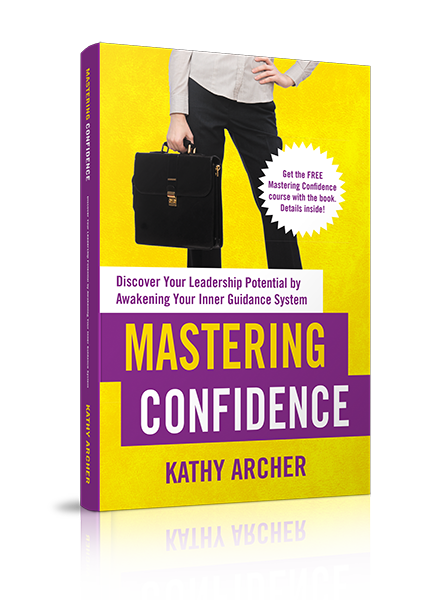
Available on Amazon
Archives
March 2024
|
|
Leadership TRAINING for Nonprofit Leaders
Become a confident and competent nonprofit Leader: Join The Training Library membership Executive and Leadership COACHING Leadership Coaching for Nonprofit Executives, Leaders and ManagerCoaching |
PODCAST for Nonprofit Leaders
The Surviving to Thriving podcast: Strategies, systems and support to lead your nonprofit with confidence FREE RESOURCES to Grow your Leadership Skills Free Leadership Training Resources, Worksheets and Templates |
Become a CONFIDENT LEADER
|


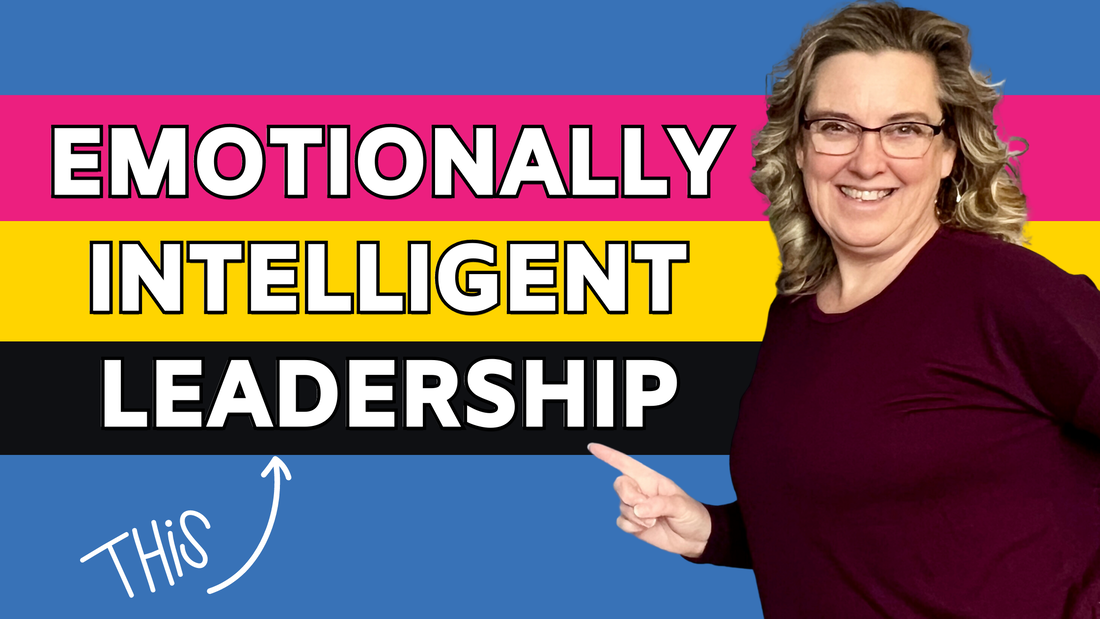
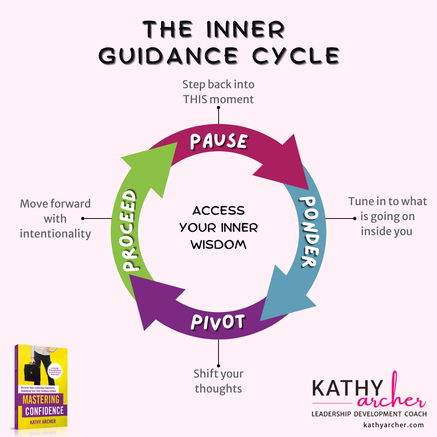
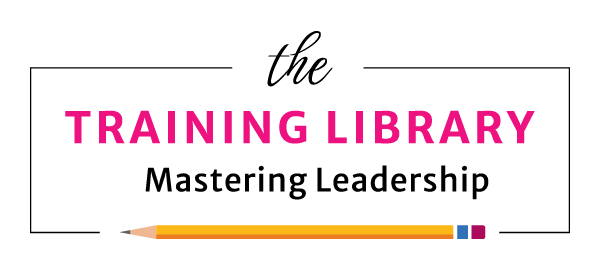
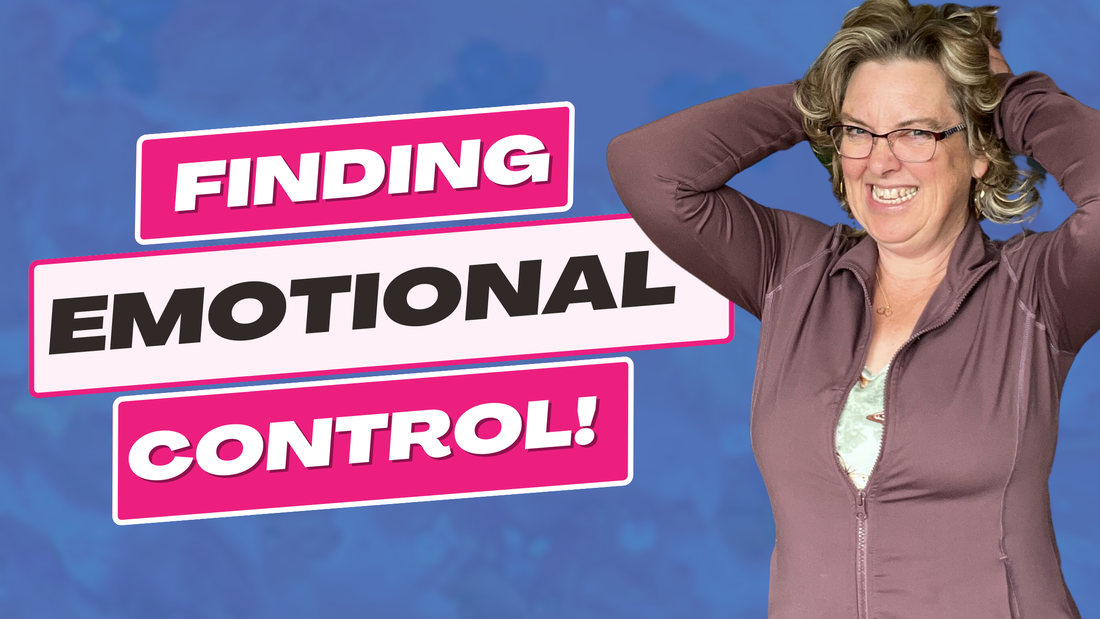
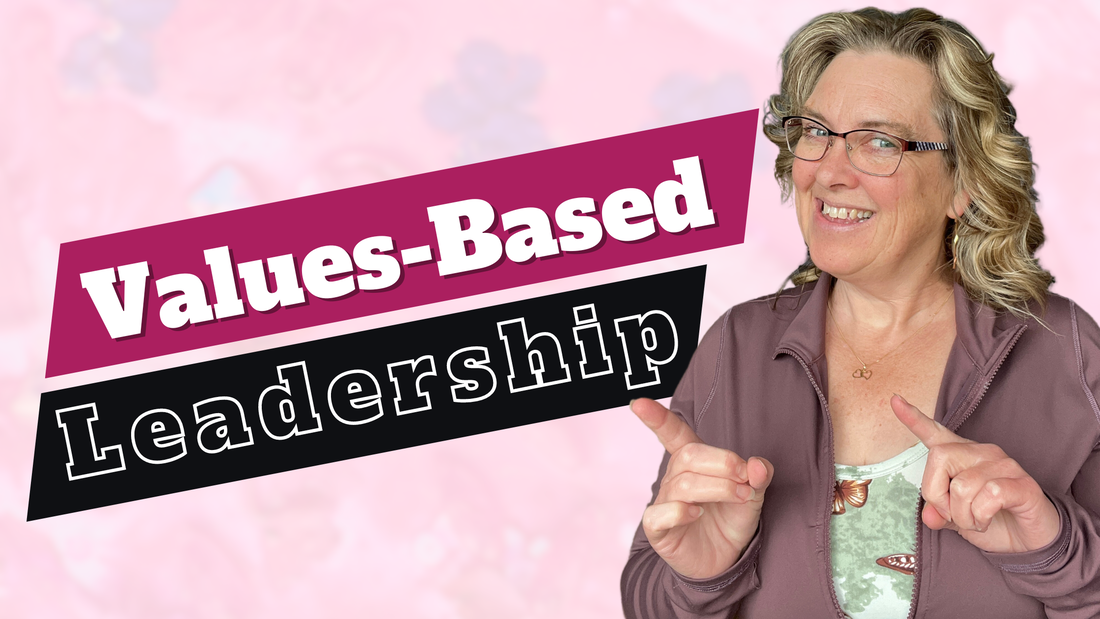


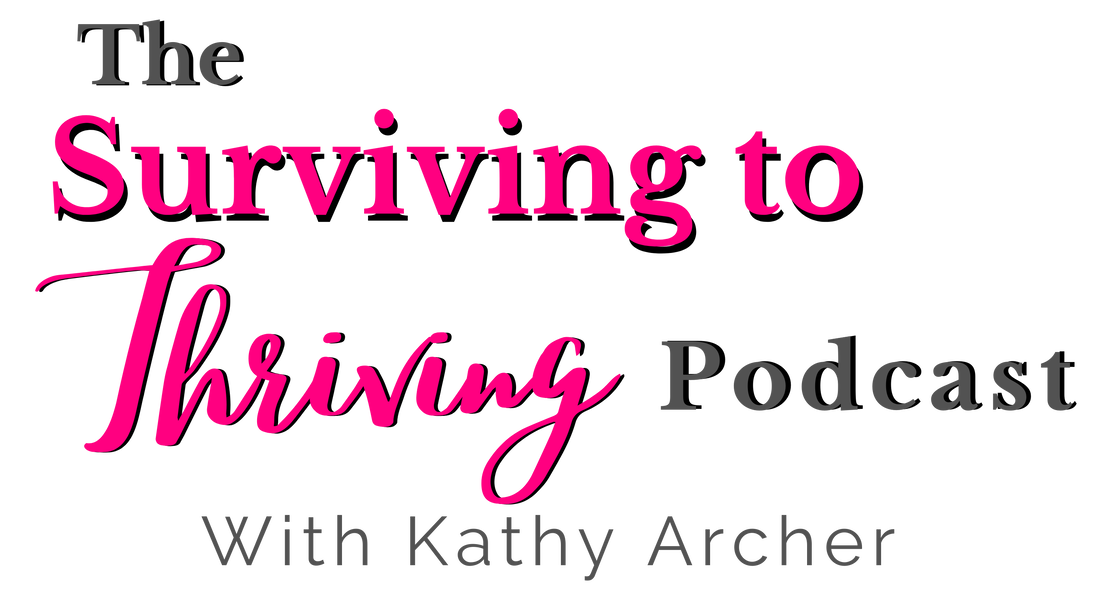
 RSS Feed
RSS Feed
